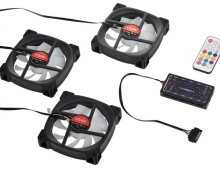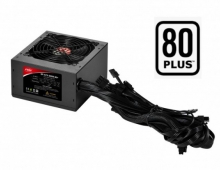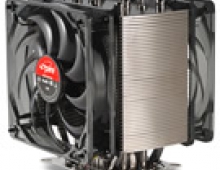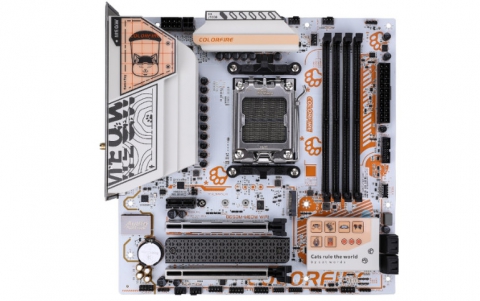Spire DigiPanel II
2. Installation
As mentioned in the specs earlier, the dimensions of the SP-206 DigiPanel II are 148.4 x 42.4 x 69.2 mm, making the device installable in any 5.25" drive bay. Screwing the Panel on the case is quite easy, identical to that of a normal 5.25" drive. After mounting the panel on the 5.25" drive bay, we connected the available cables to the appropriate positions inside the case for monitoring the temperature and fan speed.
Let us first have a look at the inside of the panel and each pin separately.

1. Fan slots. Here, we connected the fan cables with the CPU-Case-GPU fan cables inside the case. The slots are numbered as 1-2-3 respectively, indicating their monitored area when functioning the DigiPanel.
2.Sensor slot. Here we hook on the sensor cable which results in three different thermal sensitive tips for temperature monitoring.
3.Power Cable. This cable provides power to the Digipanel which is connected to a power supply cable and bridges with an expansion slot to circulate the power to another device, which in our case was a DVD-RW drive.
4.USB-1394-Earphones-Mic slots. From these connections, the cables run all the way to the back end of the case and into the appropriate connections.
 |
the power cable connecting the DigiPanel with the power supply... |
From here on, the installation was easy. We placed the sensor cables at the appropriate positions (note here that the CPU sensor cable is not to be put under the heatsink as is suggested by the heatsink manufacturers).
With the accompanying thermal straps that come with the DigiPanel II, we placed the CPU sensor near the CPU heatsink fins, while we placed the second one near the GPU heatsink of the graphics card. The third was not used.
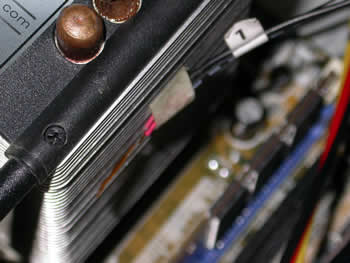
The temperature readings we got were not 100% accurate, while they differ by 8°C from the reported CPU temperature measurement taken with the SpeedFan utility. Let us say here that the sensors are quite sensitive and will react to any temperature differences occurring.
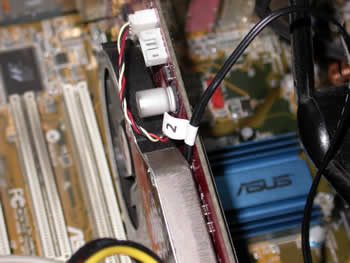
For the needs of this review, we used only two temperature sensors and one fan cable, that of the CPU fan.

Next, we put the rest of the cables (USB-1394-Mic-Earphones) through the case, to the motherboard connectors at the back of the case...

After installing all cables and booting the test PC, we went on to set the threshold for the alarm temperature and the low speed fan alarm.

The temperature upon booting was at 28.0°C while the CPU fan was at 3020rpm.

The installation procedure was finished without too much trouble, as the cables were easy to connect, and monitoring started as soon as the PC had been powered up.
Having completed the installation, lets move on to the next page were we test the USB and FireWire ports.


